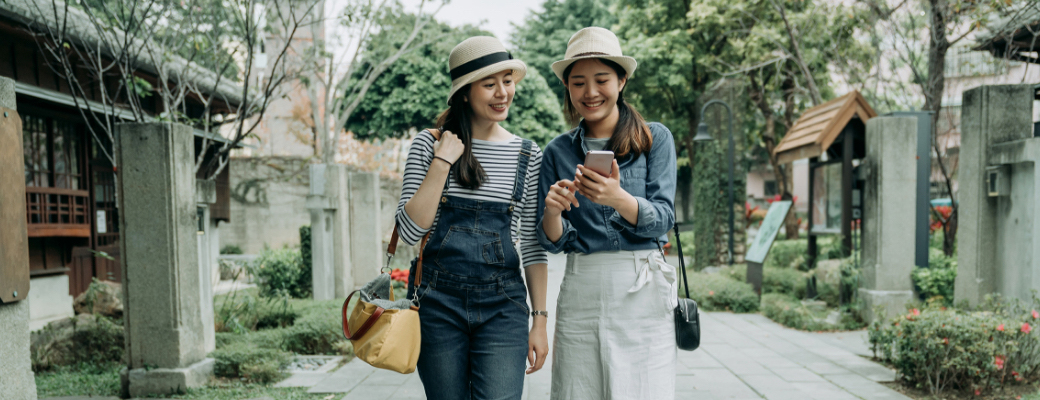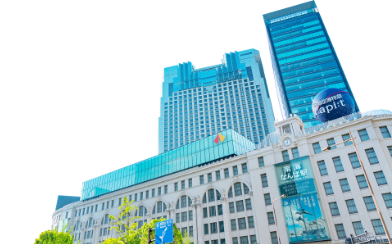
Digital Ticket
On sale: a set ticket including the Rapi:t , admission to the Tsutenkaku Observation Deck, and Nankai Soba!

What is the Namba Yasaka Shrine?
Namba Yasaka Shrine is a shrine dedicated to Susanoo-no-mikoto, Kushi-inadahime-no-mikoto, and Yahashira-miko-no-mikoto, and is famous for its large lion called "Shishiden". This article summarizes the festivals and information on access to Namba Yasaka Shrine.
Namba Yasaka Shrine is located in Naniwa-ku, Osaka City, and is said to be beneficial for driving away evil spirits, banishing plague and disease, bringing good luck, and ensuring safe delivery.
One of the most famous features of the shrine is the large, open-mouthed Lion Hall located at the front of the shrine grounds. It is said that the lion's large mouth swallows evil spirits, and many worshippers visit the shrine to pray for academic improvement, job offers, and success in examinations.
Although there are no documents available to date the founding of Namba Yasaka Shrine, according to legend, the shrine dates back to the reign of Emperor Nintoku (313-399). According to legend, the shrine dates back to the reign of Emperor Nintoku (313-399), when an epidemic broke out in the area and Gozutenno, a god of Shinto and Buddhist syncretism, appeared and was enshrined in order to cure the disease. After that, the shrine was called Nambashimonomiya (Shrine under Namba) and became popular among the people.
The three deities of Namba Yasaka Shrine are Susano-no-mikoto, Kushi-inadahime-no-mikoto, and Yahashira-miko-no-mikoto.
Susanoo-no-Mikoto
Together with Amaterasu Okami and Tsukuyominomikoto, he is worshipped as one of the "Three Noble Gods" and is famous for the story of his defeat of the giant monster Yamata-no-orochi (=all kinds of misfortune). It is said to bring good fortune in warding off evil, dispelling plague and disease, and promoting prosperous business, agriculture, and fertility.
Kushi-inadahime-no-mikoto
Queen of Susanoo-no-mikoto. Legend has it that when she was about to be sacrificed to Yamata-no-orochi, Susano-onomikoto saved her and they were married. The shrine is said to bring good luck in marriage, marital bliss, and easy childbirth.
Yahashira-miko-no-mikoto
He is the son of eight gods born to Susano-no-mikoto and Kushi-inadahime-no-mikoto.
The main attraction of Namba Yasaka Shrine is the Shishiden (Lion Hall), which is shaped like a giant lion's head. It is 12 m high, 11 m wide, and 10 m deep, and is used as a stage for dedication of Kagura (Shinto music and dance), Shishimai (lion dance), and Iaido (Japanese martial arts). Since lion dances have been popular in the area since ancient times, the lion was built along with the present main hall as a protection against evil.
During night-time events such as summer festivals and Setsubun, as well as during the New Year's season, the lion's eyes can be seen shining as one of the lights in the temple grounds.
Tsunahiki Shingi festival
The origin of this ritual is that Susanoo-no-mikoto defeated Yamata-no-orochi and saved the people. The eight-headed and eight-tailed tug of war rope is drawn in the shape of a serpent, and the tug is drawn in the direction of the year's blessing. After the rope is pulled, it is enshrined in front of the god, and people pray for blessings from the sea, rivers, mountains, and fields, as well as for the stability of their livelihood, safety in the home, and prosperity in their business.
The origin of the festival is not clear, but various books from the Edo period (1603-1867) indicate that it has been practiced since quite a long time ago.
In 2001, it was designated as the first "Intangible Folk Cultural Asset" in Osaka City.
Summer Festival, Funatogyo (Boat Procession)
The Summer Festival of Namba Yasaka Shrine is held every year on July 13 and 14. It is a very lively festival where portable shrines, jiguruma (carts), and drums parade through Sennichimae, Dotonbori, and Ebisubashi Suji. For two days, lion dances, jiguruma music, and other performances are dedicated to the shrine, and events such as rice cake pounding are also held.
The Funatogyo event is said to have been held as grandly as the Tenjin Festival during the Edo period (1603-1868). It was once discontinued after the middle of the Edo period, but was revived in 2001 for the first time in about 230 years with the cooperation of the Ujiko (people who believe in the deity) and local businesses, and a Funatogyo preservation society was formed.
Today, a fleet of about 20 boats moves from the Minatomachi landing to the Dotonbori River, shouting and shouting as they make their way through the summer streets of Osaka's Minami district.
Namba Yasaka Shrine is a place where one can receive divine virtues to ward off bad luck, ward off epidemics, bring good luck, and ensure safe delivery. It is a popular power spot visited by locals as well as many people from Japan and abroad. It is located near the center of Namba, making it easily accessible. Why not stop by on your way out?

